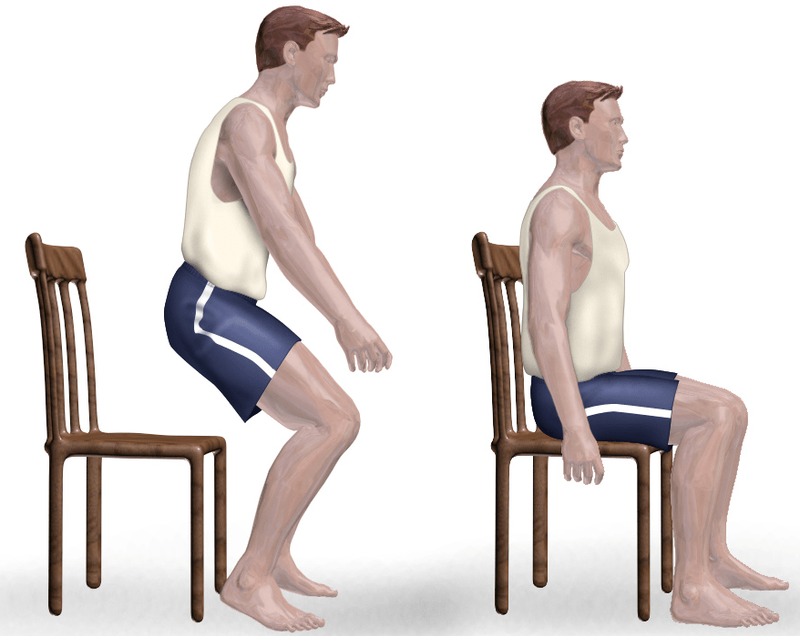
Staying strong in older age
Maintaining and Building Muscles and Staying Strong in Older Age
Before joining the YourStride team I spent years working with older adults as a nutritionist and personal trainer. I’m thrilled to share some tips and advice.

In this post, I’m going to talk about maintaining and building muscles and staying strong in older age. Strength training for older adults is a fantastic way to maintain and significantly improve overall health.
The NHS specifically advises adults over the age of 65 to do activities that improve strength at least 2 days per week.
I would argue that strength training for older adults is just about the most important type of exercise to choose.
Strength training

Often when people hear the words 'strength training' they immediately envisage a gym environment with barbells and dumbbells scattered around. However, strength training can also refer to a much gentler training which is often more suitable for older adults. Strength training is also often referred to as resistance training and it encompasses a broad spectrum of styles and intensity.
Muscle strength is simply a measure of how well we can manoeuvre our body and things attached to our body (like clothes, shopping bags, pots and pans etc.) in relation to gravity. Without gravity there would be no need for strength. That's why when astronauts spend time in space, they have to dedicate a significant amount of time doing strength based exercises. If they didn’t, their muscles would waste away very quickly (muscle atrophy). In fact, astronauts spend upwards of 3 hours a day doing strength exercises whilst in space.
It's our muscles that provide us with strength. They pull on our bones to move our joints.
The muscle lifecycle
Muscles go through a natural lifecycle:
When we're born they are extremely weak, hence why babies can't walk or even sit up.
Over time our muscles develop and become strong enough for us to be able to move around. They adapt to gravity's force and become strong enough to overcome it.
Eventually, as we age our muscles naturally begin to decline in size and strength.
NB. Other factors such as coordination and balance also play a role.
Without doing any exercise, they become so weak that we often struggle to perform basic movements such as walking, sitting down, standing up or picking up certain objects.
There is a clear correlation between inactivity and muscle atrophy.
For example, if we spend most of our time sitting and lying down then muscle atrophy will occur more quickly. Thankfully we can choose to do certain things to manipulate and overcome the natural lifecycle of our muscles.
This means resistance training is a must if you want to maintain or even develop strength with age.
Squats

One of my favourite exercises is the squat. The squat essentially imitates the standing to sitting and sitting to standing movement pattern. Given that we perform this movement many times each day, it is a good idea to stay strong in this particular movement pattern. It is also a great place to start for improved mobility and overall health.
In order for our muscles to adapt and become stronger we must place the necessary amount of stimulus on them. Simply sitting down and standing up once probably won’t be enough. Instead you can do it numerous times. This is known as exercise repetitions.
Remember, everyone has very different levels of fitness and strength so you’ll need to perform the number of repetitions that is suited to you.
Grab a chair and try sitting down and standing up a few times in a row. When your perceived level of effort gets to be quite high you can stop and rest before doing it again. Try this cycle 2 or 3 times (together known as a "set"). You can do this set 2-5 times per week again depending on your current level of strength and fitness.
You might need to use the arms of the chair or some kind of support to help you and that’s fine. Over time your muscles and strength will build up.
Taking it a step further: When you get to a point where standing up and sitting down multiple times is quite easy for you, you can add in some weight. Holding a thick book might add around 2-3 kilos of weight which your muscles then have to adapt to over time.
Progressively adding in more repetitions, more sets and more weight over time is the secret to getting stronger.
Squats will help to build muscles and strength in your legs. Next time, I will share some great upper body exercises that will help you to maintain and gain strength in your arms as well.
Please be aware, this is just general advice from me. I am not acting in an official health professional capacity.
Don’t forget to consult with your doctor before embarking on any type of new exercise regime just as a safety precaution.